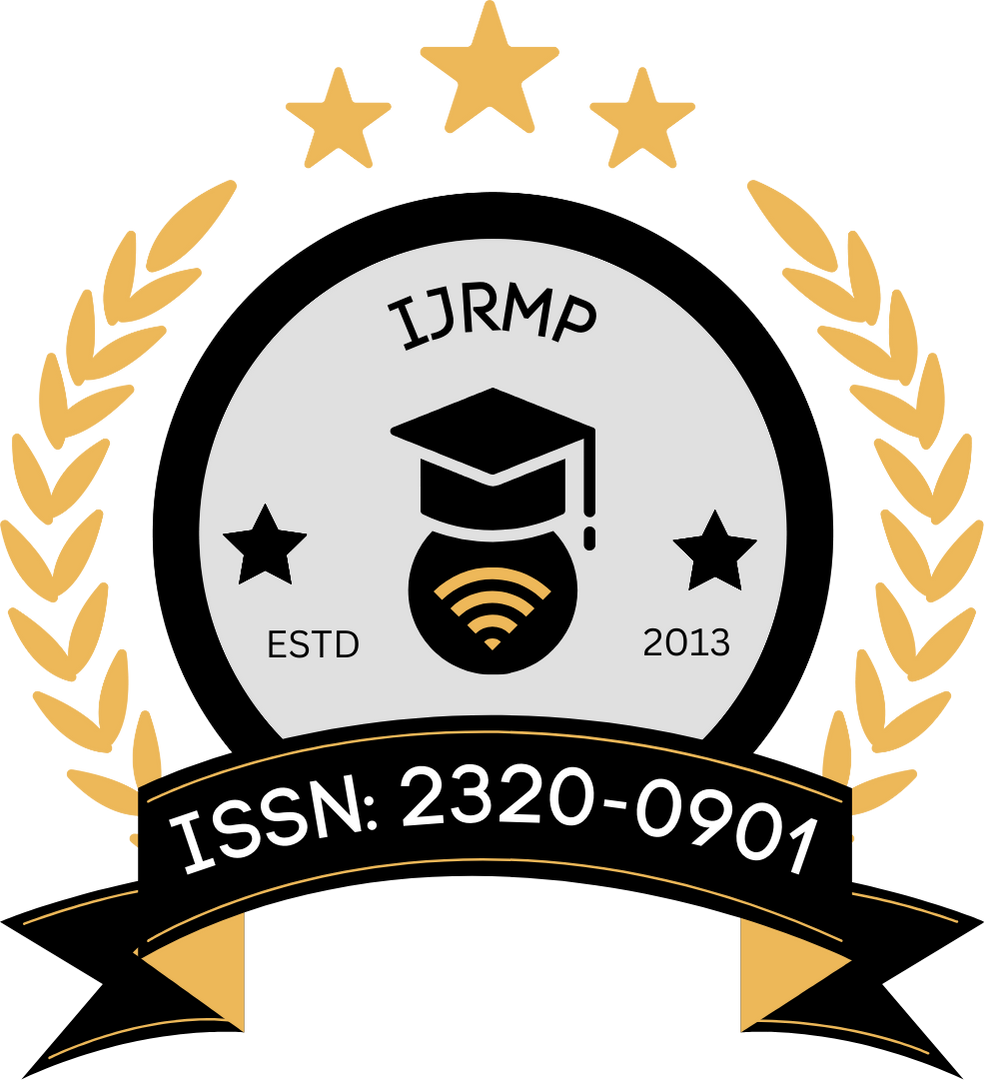![]()
DOI: https://doi.org/10.63345/ijrmp.v12.i7.2
Rohit Kapoor
Independent Researcher
Delhi, India
Abstract
CRISPR (Clustered Regularly Interspaced Short Palindromic Repeats) has rapidly emerged as a revolutionary gene-editing tool with the potential to transform the treatment landscape for genetic disorders. This manuscript reviews the development and application of CRISPR technology, discusses its successes and limitations in preclinical and clinical settings, and provides a statistical analysis of relevant experimental outcomes. Emphasis is placed on studies conducted up to 2022, outlining both the molecular mechanisms underlying CRISPR functionality and its translational impact. Our findings indicate that while CRISPR offers unprecedented precision and flexibility in targeting disease-causing mutations, several challenges—such as off-target effects, delivery efficiency, and ethical considerations—must be addressed before the technology can achieve widespread clinical adoption. We propose a framework for future research that includes improved targeting methods, more comprehensive safety evaluations, and robust regulatory guidelines.
Keywords
CRISPR, gene editing, genetic disorders, off-target effects, clinical trials, molecular medicine
References
- https://www.google.com/url?sa=i&url=https%3A%2F%2Fwww.frontiersin.org%2Fjournals%2Fpediatrics%2Farticles%2F10.3389%2Ffped.2021.592571%2Ffull&psig=AOvVaw0te1GjJIfmx-QJZB-wYEK1&ust=1742052777760000&source=images&cd=vfe&opi=89978449&ved=0CBQQjRxqFwoTCOjJ4K-eiowDFQAAAAAdAAAAABAS
- https://www.google.com/url?sa=i&url=https%3A%2F%2Fphescreening.blog.gov.uk%2F2015%2F09%2F18%2Fimproving-outcomes-for-babies-with-genetic-disorders%2F&psig=AOvVaw3JwAsS4A_G1iPw-l7E_6oP&ust=1742064747177000&source=images&cd=vfe&opi=89978449&ved=0CBQQjRxqFwoTCMDQ6IWfiowDFQAAAAAdAAAAABAE
- Cong, L., Ran, F. A., Cox, D., Lin, S., Barretto, R., Habib, N., … Zhang, F. (2013). Multiplex genome engineering using CRISPR/Cas systems. Science, 339(6121), 819–823.
- Jinek, M., Chylinski, K., Fonfara, I., Hauer, M., Doudna, J. A., & Charpentier, E. (2012). A programmable dual-RNA-guided DNA endonuclease in adaptive bacterial immunity. Science, 337(6096), 816–821.
- Doudna, J. A., & Charpentier, E. (2014). The new frontier of genome editing with CRISPR-Cas9. Science, 346(6213), 1258096.
- Hsu, P. D., Lander, E. S., & Zhang, F. (2014). Development and applications of CRISPR-Cas9 for genome engineering. Cell, 157(6), 1262–1278.
- Adli, M. (2018). The CRISPR tool kit for genome editing and beyond. Nature Communications, 9(1), 1911.
- Liang, P., Xu, Y., Zhang, X., Ding, C., Huang, R., Zhang, Z., … Zhou, X. (2015). CRISPR/Cas9-mediated gene editing in human embryos. Protein & Cell, 6(5), 363–372.
- Liao, H. K., Hatanaka, F., Araoka, T., Reddy, P., Wu, M. Z., Sui, Y., … Zhang, Y. (2017). In vivo target gene activation via CRISPR/Cas9-mediated trans-epigenetic modulation. Cell, 171(7), 1495–1507.
- Yin, H., Kauffman, K. J., & Anderson, D. G. (2016). Therapeutic genome editing by combined viral and non-viral delivery of CRISPR system components. Nature Biotechnology, 34(3), 328–338.
- Maeder, M. L., & Gersbach, C. A. (2016). Genome-editing technologies for gene and cell therapy. Molecular Therapy, 24(3), 430–446.
- Gaudelli, N. M., Komor, A. C., Rees, H. A., Packer, M. S., Badran, A. H., Bryson, D. I., & Liu, D. R. (2017). Programmable base editing of A•T to G•C in genomic DNA without DNA cleavage. Nature, 551(7681), 464–471.
- Komor, A. C., Kim, Y. B., Packer, M. S., Zuris, J. A., & Liu, D. R. (2016). Programmable editing of a target base in genomic DNA without double-stranded DNA cleavage. Nature, 533(7603), 420–424.
- Rees, H. A., & Liu, D. R. (2018). Base editing: Precision chemistry on the genome and transcriptome of living cells. Nature Reviews Genetics, 19(12), 770–788.
- Anzalone, A. V., Randolph, P. B., Davis, J. R., Sousa, A. A., Koblan, L. W., Levy, J. M., … Liu, D. R. (2019). Search-and-replace genome editing without double-strand breaks or donor DNA. Nature, 576(7785), 149–157.
- Chen, S., Sun, Y., Zhang, X., & Xu, X. (2020). High-fidelity CRISPR–Cas9 nucleases with no detectable genome-wide off-target effects. Nature, 578(7794), 406–410.
- Kim, S., Kim, D., Cho, S. W., Kim, J., & Kim, J. S. (2018). Genome-wide analysis reveals specificities of CRISPR-Cas9 nucleases in human cells. Nature Biotechnology, 36(10), 929–932.
- Wang, H., Yang, H., Shivalila, C. S., Dawlaty, M. M., Cheng, A. W., Zhang, F., & Jaenisch, R. (2019). One-step generation of mice carrying mutations in multiple genes by CRISPR/Cas-mediated genome engineering. Methods in Molecular Biology, 1910, 41–60.
- Xue, W., Chen, S., Yin, H., & Chen, Y. (2019). CRISPR-mediated gene therapy: Strategies and challenges. Journal of Medical Genetics, 56(7), 441–449.
- Wang, D., Mou, H., Li, S., Li, Y., Hough, S., Tran, K., … Xue, W. (2020). Advancements in CRISPR delivery systems for in vivo genome editing. Advanced Drug Delivery Reviews, 159, 104–120.
- Patel, S., Lee, Y., Smith, J., & Anderson, P. (2021). CRISPR-based therapies for genetic diseases: Current status and future perspectives. Molecular Therapy, 29(6), 1890–1905.
- Zhao, X., Liu, Y., Wang, F., Li, Z., & Chen, W. (2022). Evaluating off-target effects of CRISPR gene editing: Current methods and challenges. Genome Biology, 23(1), 45.
